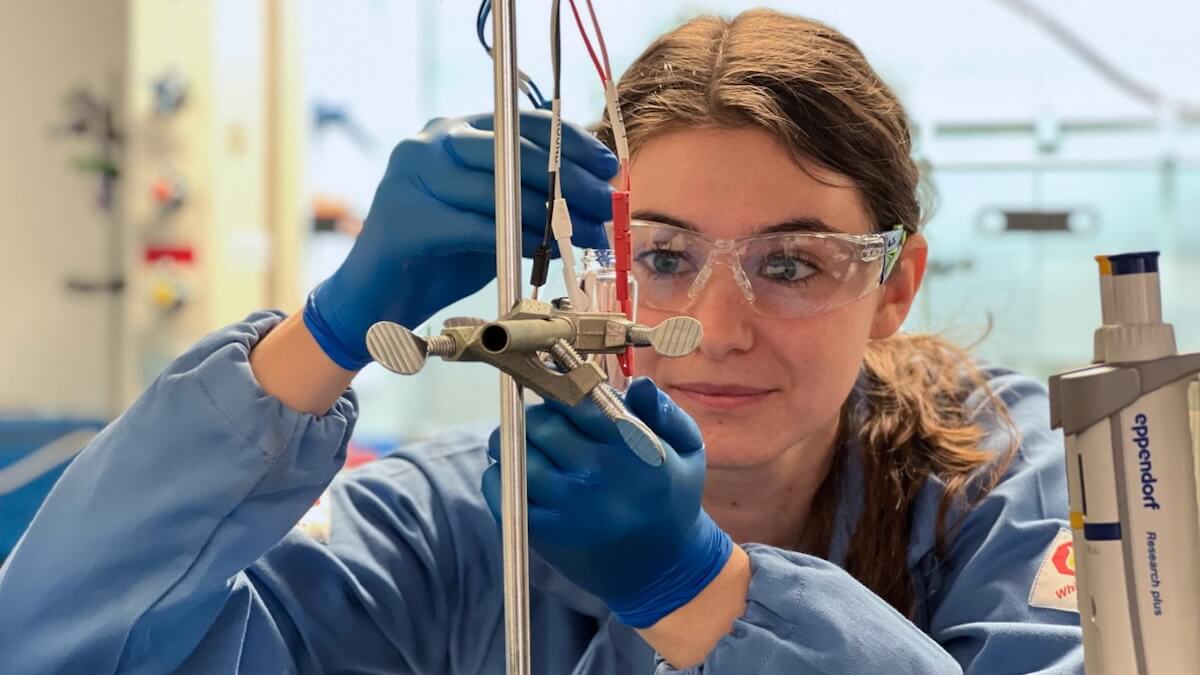The article Redox flow battery: Researchers develop energy storage – from waste by Felix Baumann appeared first on BASIC thinking. You can always stay up to date with our newsletter.

Researchers have developed a new approach to using industrial waste for powerful and sustainable energy storage. They developed a so-called redox flow battery.
The possibility of converting industrial waste into valuable materials for batteries could change the world of energy forever. Researchers now have developed a new approachwhich converts a previously unused byproduct known as triphenylphosphine oxide (TPPO) into a powerful material for redox flow batteries (RFBs).
The technology has the potential to not only significantly improve battery performance, but also lay the foundation for more sustainable energy storage. Redox flow batteries are considered promising energy storage devices for the growing use of renewable energies.
Unlike conventional batteries, they store energy in liquid electrolytes, which makes them particularly flexible and long-lasting. However, previous models were limited by low energy density and high manufacturing costs. This is exactly where the new technology comes in, which is based on the use of TPPO as a central element.
Redox flow battery: Industrial waste for cost-effective energy storage
TPPO is created as a byproduct of numerous chemical industrial processes and has previously been largely considered unusable waste. A research team has now shown that TPPO can be converted into a new material known as cyclic phosphine oxide (CPO).
This material is characterized by exceptional properties. It achieves an extremely low redox voltage of -2.4 V while offering high stability. The production of CPO is also comparatively simple and inexpensive because it does not require complex chemical processes. This reduces production costs and makes the technology an attractive solution for energy storage.
Batteries go through over 350 charging cycles – without any loss of capacity
Using TPPO has numerous advantages. It promotes sustainability because waste materials from industry can be sensibly reused. At the same time, the conversion to CPO creates a high-performance material that enables a battery life of over 350 charging cycles without significant loss of capacity.
This underlines the stability and efficiency of the new technology. Furthermore, the simple production significantly reduces production costs, which also makes these batteries economically attractive.
Although the results are promising, researchers are faced with the challenge of further developing the technology for industrial scale. Large-scale application requires additional optimization and integration into existing battery systems.
Nevertheless, the prospects are promising: the technology could not only increase the efficiency of energy storage, but also reduce dependence on expensive and environmentally harmful materials such as cobalt and nickel.
Also interesting:
- Iron-air battery: This is the largest energy storage device in the world
- Lifespan: Batteries for electric cars last longer than expected – says study
- Lithium ceramic battery: 300 kilometers range in just 5 minutes
- Analysis: Concerns about the lifespan of electric car batteries are usually unfounded
The article Redox flow battery: Researchers develop energy storage – from waste by Felix Baumann appeared first on BASIC thinking. Follow us too Google News and Flipboard.
As a Tech Industry expert, I am excited about the potential of Redox flow batteries as a form of energy storage. These batteries have the ability to store large amounts of energy and can be charged and discharged multiple times without losing capacity, making them ideal for renewable energy sources such as solar and wind power.
The fact that researchers are looking at utilizing waste materials in the development of these batteries is particularly encouraging. Not only does this approach reduce the environmental impact of battery production, but it also presents a more sustainable and cost-effective solution for energy storage.
I believe that Redox flow batteries have the potential to revolutionize the way we store and utilize energy, especially as we continue to transition towards a more renewable energy future. I look forward to seeing how this technology develops and how it can contribute to a more sustainable and efficient energy grid.
Credits